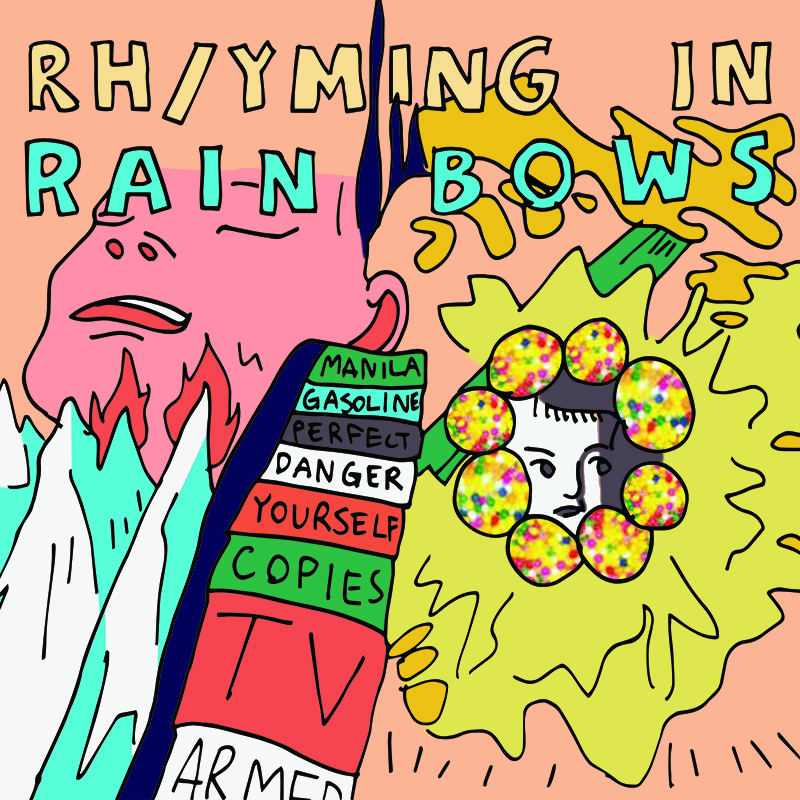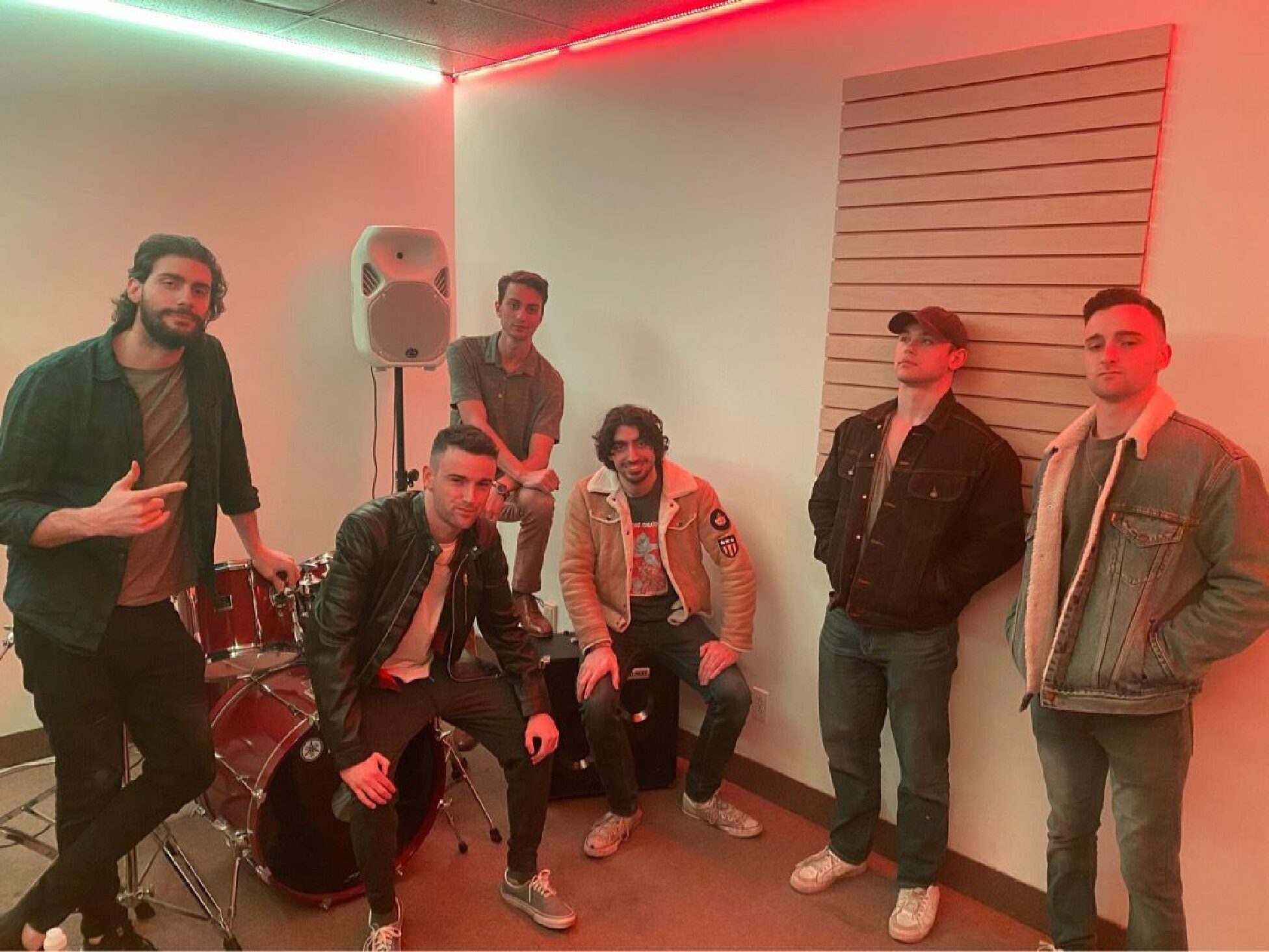A retrospective on the band’s album artwork and music videos
Despite the fact that music is primarily an audio-based platform, visuals have always played an integral role in how the medium is consumed. Album artwork, costumes, logos and music videos are important, even necessary. For an artist to cultivate a public image that defines their style of music, they need to display a particular interest in visual media .
Radiohead, for instance, has placed an emphasis on visual aspects. Always working in tandem with artist Stanley Donwood during the recording process to create striking album artwork, Radiohead backs up its music with similarly strong visual elements.
From the 1995 release of The Bends, lead singer Thom Yorke, under the pseudonym Dr. Tchock, has collaborated with longtime friend Donwood on every aspect of the band’s visuals. According to a 2006 The Guardian interview with Yorke, the friends met while attending the University of Exeter in England. They shared a mutual reverence for experimental art and music. Since then, the pair have collaborated on Radiohead’s iconic album artwork and packaging: from the cold, desolate highways of OK Computer (1997) to the colourful and glitchy energy of In Rainbows (2007) and the aged sliver of the recent A Moon Shaped Pool (2016).
Radiohead’s album art manages to capture the mood and atmosphere set out by the ambitious sounds of their albums, creating visuals that enrich the music. Through their artmaking process, Yorke and Donwood capture the full spirit of the music. According to NME, Donwood even painted album art for A Moon Shaped Pool while the band recorded it in an adjacent room. While listening to the band record, Donwood translated the soundscapes emitting from the recording room into visuals—encapsulating the energy of the music through unique and often strange imagery.
For the cover of A Moon Shaped Pool, Donwood and Yorke utilized weather conditions to create living artwork. Earlier this year, in an interview with Creative Review, Donwood said: “I did some experiments with pools of water and paint and wind on quite a small scale, and it seemed to work in quite an interesting way. So I thought, ‘Well this will be great, I’ll just scale up.’ So I bought a ridiculous number of large canvases and paint, and we all went down to Provence, just south of Avignon, to where [Radiohead] recorded—a place called La Fabrique, which is a really lovely place, an old mill where they used to make the red dye for Napoleon’s uniforms.”
This process created truly bold artwork, reflecting the maturity of the band and the vibrant, organic sound of their album. The pair are never complacent in the way they make art, always challenging themselves with new ideas and styles.
Music videos also have the ability to complement the accompanied music, as they pair the songs with a matching aesthetic. Radiohead’s music videos are sometimes dark and twisted, strange and cryptic, emotional and even funny.
The video for “Just” (1995) revolves around a grieving man, laying on the sidewalk. A passersby asks him, “What’s wrong?” with subtitles denoting their conversations. The video and lyrics combine to make an extended metaphor about the systemic disadvantages often faced by minority communities. The video ends with the man telling the large crowd of people what’s wrong, except that part isn’t subtitled. The band, to this day, has never revealed what the man said.
“Paranoid Android” (1997) is a strange animated video, matching the song’s eerily raucous sound. The video follows a boy’s strange day, which includes naked mermaids, a drunk politician who decapitates himself, a man with a head growing out of his stomach and an angel flying a helicopter. It’s a frantic and chaotic video that perfectly captures the essence of the song— encapsulating the disconcerting feeling of being disoriented.
Recently, Radiohead has released relatively subdued videos. As the band has matured, their creative approach toward music videos has matured as well. The video for “Lotus Flower” (2011) features the wild dance moves of Yorke, shot using a simple black-and-white camera filter. For the “Daydreaming” (2016) video, the band enlisted the help of prolific movie director, Paul Thomas Anderson. The video has Yorke walking through different vignettes of people’s lives, eventually receding into a cave, atop a mountain covered in snow. The video for “Burn the Witch” (2016) is a stop-motion film which retells the story of the 1973 cult-classic film, The Wicker Man—about a policeman who is entrapped into participating in a sacrificial ceremony.
The videos are not simple or lacking complexity. For example, stop-motion animation is very intensive work, which requires each shot to be fully realized on paper before shooting in a proper studio. And while the video for “Daydreaming” may look simple, the variety of locations and the ability to light them correctly for a 35mm camera takes a lot of preparation. Nothing a savvy director like Thomas Anderson can’t handle.
Visuals are never an afterthought for Radiohead; the band works tirelessly to produce art that enriches its music. Video and artwork give fans a shared experience, with fans working together to uncover the hidden meaning behind each minute detail. Music goes beyond just sound—when love and care are put into the visuals, something truly special is created.
Graphic by Zeze Le Lin




